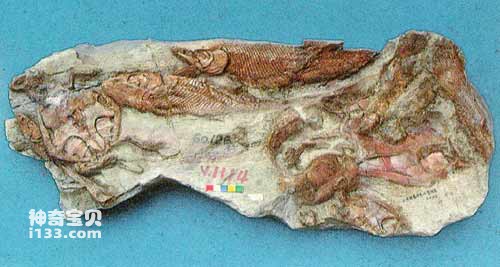When we visit zoos, botanical gardens and aquariums, when we walk in forests, grasslands and fields, when we go boating in rivers and lakes, we feel the wonder and vastness of the living world all the time. Flowers, grass, trees, insects, fish, birds and beasts, all kinds of things are competing for freedom in the frosty sky.

Everest
From the equator to the poles, from the bottom of the ocean with a depth of more than 11,000 meters to the top of Mount Everest with an altitude of more than 8,000 meters, the earth's crust is everywhere, whether it is mountains, plains, Gobi, farmland, forests, grasslands, rivers, lakes and seas. All living things are living and multiplying. Even in the lower stratosphere, which is 10 kilometers above sea level, many migrating birds and insects can be found flying among them. It is not surprising to see various single-cell microorganisms floating with the air currents.

China Paleontological Museum
This 21-kilometer-thick range of life on the Earth's surface is called the biosphere.
In this vibrant biosphere, living things, that is, living objects, are not only abundant in number, but also in great variety. According to incomplete statistics, there are more than 1.6 million species of living things living in modern times, including more than 400,000 species of plants, more than 1.1 million species of animals, and at least 100,000 species of microorganisms. According to scientists' estimates, there may be as many as 8 to 10 million species of living things living on the earth. In other words, at least four-fifths of the species living on the earth today await our further discovery and identification.
These colorful biological types, rich biological numbers, and the relationships between them constitute the diversity of life on earth.

Dinosaurs in the Chinese Paleontology Museum

fish fossil
If we go to the Chinese Palaeozoology Hall not far to the west of the Beijing Zoo, we will see another deep, vast and mysterious world before us. Huge dinosaurs and a variety of grotesque ancient fish and prehistoric monsters tell us that tracing back along the track of time, the ancestors of modern creatures and their distant relatives in countless past worlds have been using the Yangtze River for more than 3 billion years. The majestic power of the waves pushing forward makes the earth full of vitality. Compared with the life history of more than 3 billion years, a human life or a generation of modern organisms seems so insignificant; similarly, compared with all the biological species that have lived on the earth for more than 3 billion years, modern organisms are just a drop in the ocean. Based on the current research and analysis of biological fossils, scientists speculate that only one of every 5,000 to 10,000 ancient organisms can be lucky enough to become a biological fossil and survive; based on the time it takes for new species to replace old species, it is estimated that since life There are probably about 1 billion species of living things that have survived on the earth since its emergence!

Ancient mammals in China Paleontology Museum
This is simply an astronomical number!
While marveling at the complexity and richness of life forms or biological species on the earth, you wonder whether the question will arise in your mind: Do these as many as 1 billion species of creatures live and die on their own without any connection, or do they interact with each other? There are inextricably linked; if there is a connection, then what is the most basic thing that runs through all life processes or connects all biological species? This question has been answered and improved by biologists and paleontologists through unremitting efforts. In our museum of paleontology, you'll find many answers to this question and the latest developments.
animal tags:
We created this article in conjunction with AI technology, then made sure it was fact-checked and edited by a Animals Top editor.